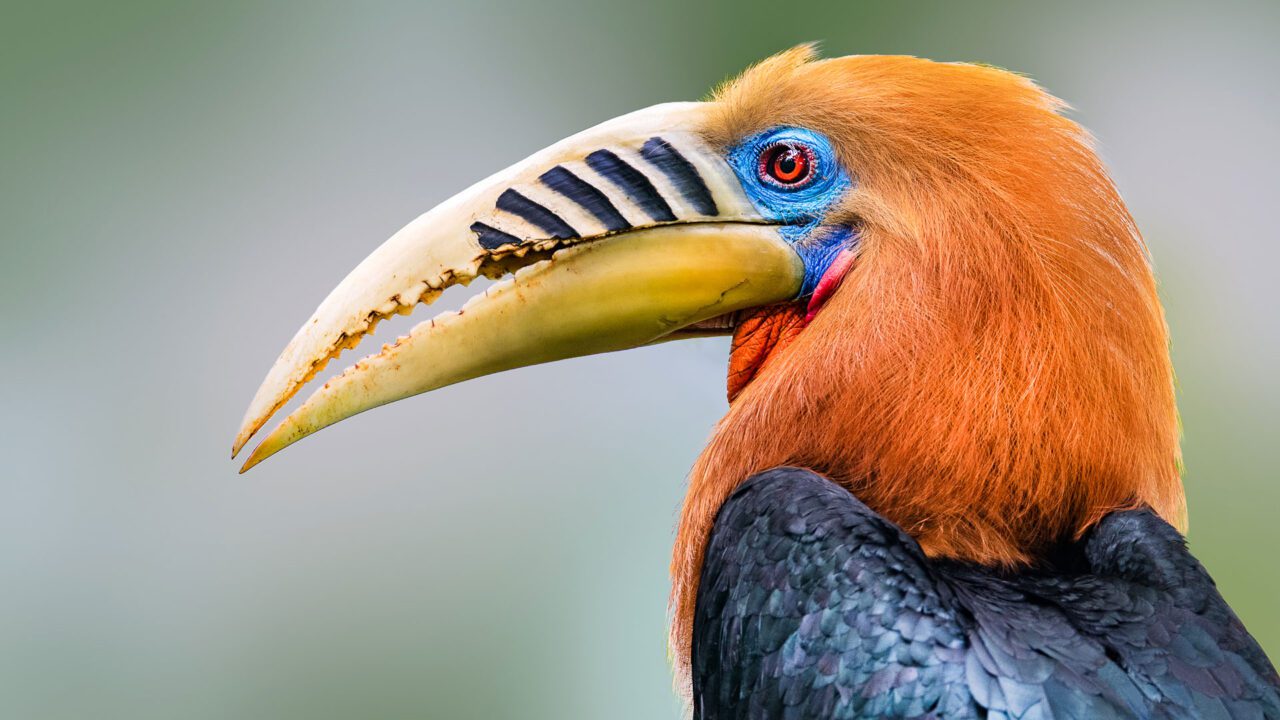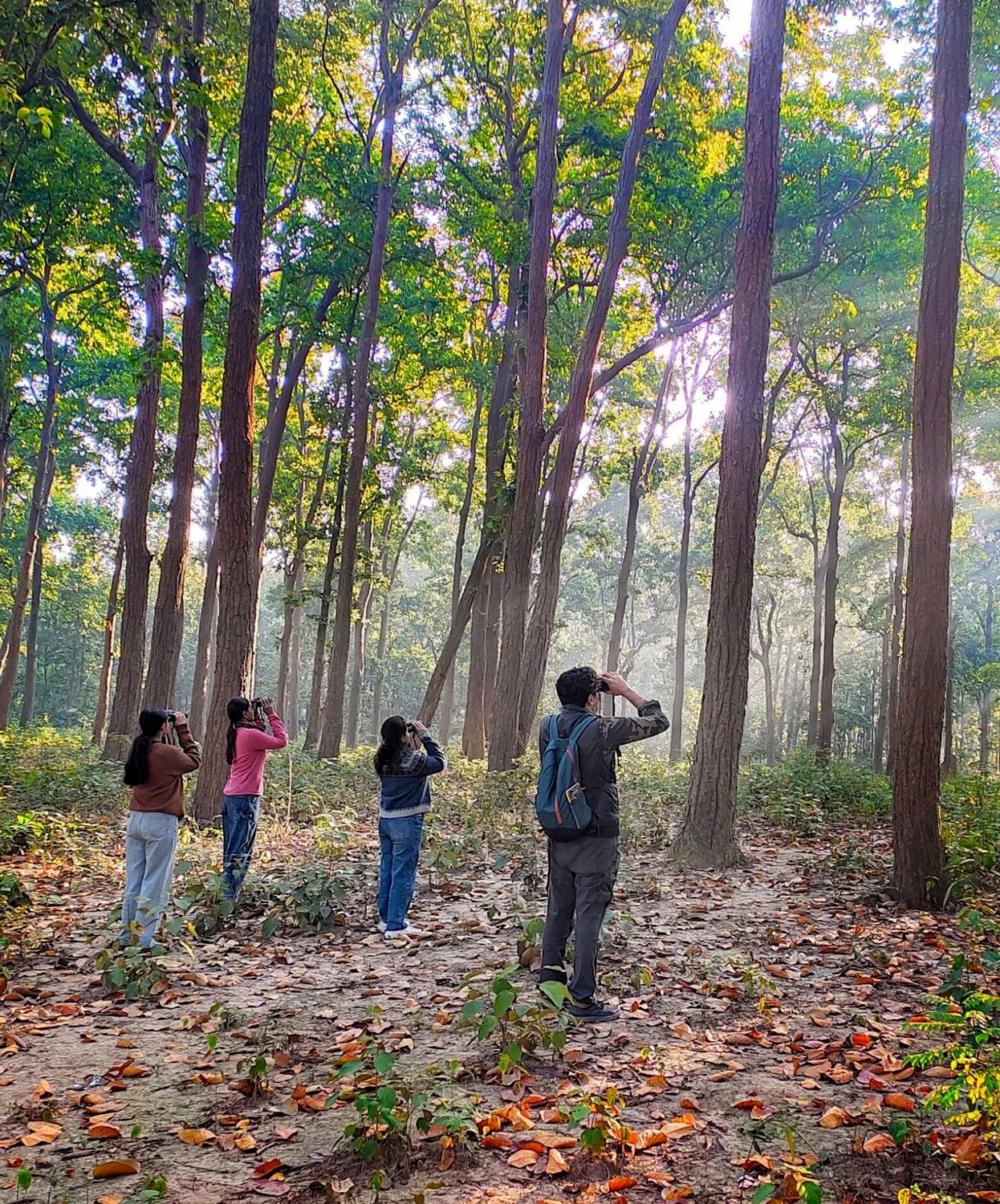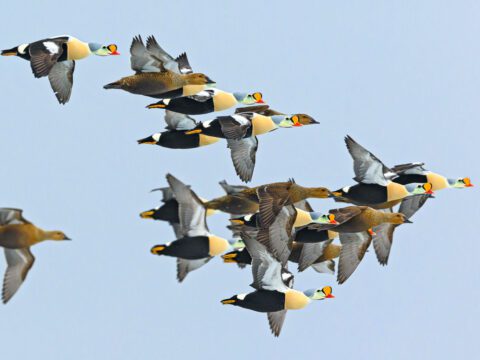View From Sapsucker Woods: A New Dawn, Hornbills, and Open Science
April 1, 2024
From the Spring 2024 issue of Living Bird magazine. Subscribe now.
A new day is breaking and I can hear a dawn chorus filled with parakeets, hornbills, and peafowl. My mind races with excitement, knowing the day will be full of new birds, many of which will be almost indistinguishable small green warblers. India. At last.
We are visiting collaborators from Bird Count India to learn how they have inspired a nation to become participatory scientists and fall in love with birds. BCI has recently published the second State of India’s Birds, based on over 30 million observations from more than 30,000 birdwatchers, covering 942 species. It’s a monumental achievement. Perhaps the most extraordinary citizen science project on the planet. How did they do it?
Two striking takeaways from talking with bird watchers across India are the motivation of the participants and the makeup of the groups. At its heart, this is a passionate, bottom-up, community-led movement to understand what is happening to India’s birds and get people to care about their environment. It’s not a top-down, government-mandated monitoring scheme—it’s by the people, for nature.

The groups themselves are typically full of relatively young, tech-savvy, highly educated, conservation-minded citizen scientists. Lots of people started bird watching more seriously during COVID. Many use a camera lens at least as often as a pair of binoculars. And almost all use eBird as their platform of choice to collate data and make sure it’s useful for conservation. There’s also a fun competitive element, with events like Great Backyard Bird Count giving local teams an opportunity to celebrate their success and encourage the bird-curious.
The vibe is unmistakable: birding is cool.
What are the wider lessons from BCI? After all, the phenomenon is not unique: similar community-led, tech-powered birdwatching groups are emerging across Latin America, Africa, and Asia.
The first is that these are fundamentally people-powered movements, driven by activist birdwatchers. It’s an incredibly exciting and powerful model, but also comes with an expectation that data and media will be available to anybody who wants to use it. This is open science in the truest sense. It requires a mind shift by more traditionally minded science organizations.
It’s also fascinating to see how a new collective identity—BCI—has allowed a wide range of organizations to collaborate in a very open way, sharing pride in achieving something as ambitious as the State of India’s Birds. That approach requires established organizations and brands to take a back seat.
Finally, it’s clear the AI-enabled bioacoustic revolution has the potential to have a huge impact in monitoring wildlife, especially in areas with a hyper-diversity of bird species such as mountainous regions. As well as visiting the Bird Count India team, we met with some of the world’s leading conservation bioacoustics groups. Passive acoustic monitoring devices are already being used to track species in key regions like the Western Ghats and Himalayas. There’s now an urgent need to develop algorithms to recognize even more species, and figure out how bioacoustics detections can be used alongside human observations.
There are broader societal challenges, too. Translating data and science into conservation action is a key one. Around the world, government agencies are often still scratching their heads about what citizen-science platforms like eBird and iNaturalist, and technologies like bioacoustics and camera traps, mean for wildlife monitoring. But make no mistake, this is a new dawn: people-powered, tech-enabled citizen science is changing the face of conservation in the Global South.

All About Birds
is a free resource
Available for everyone,
funded by donors like you
American Kestrel by Blair Dudeck / Macaulay Library


